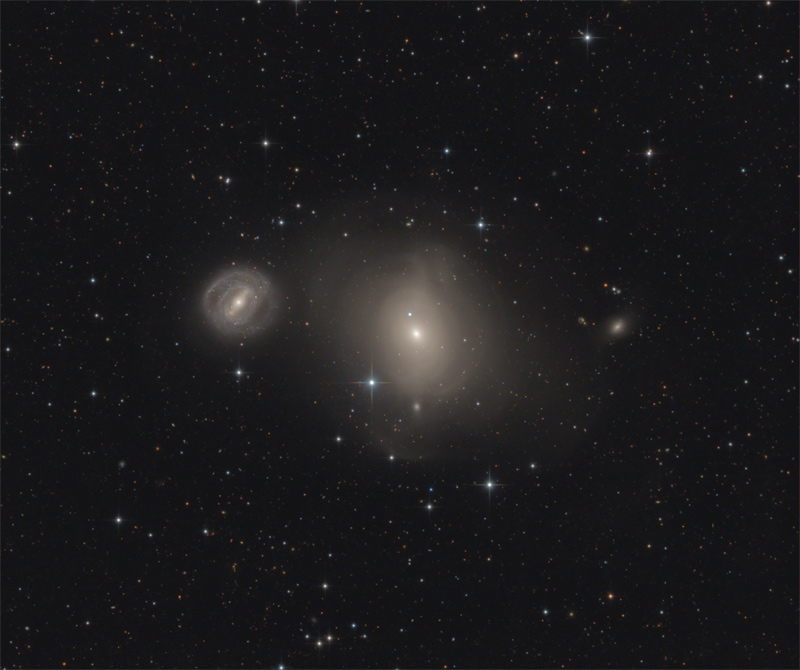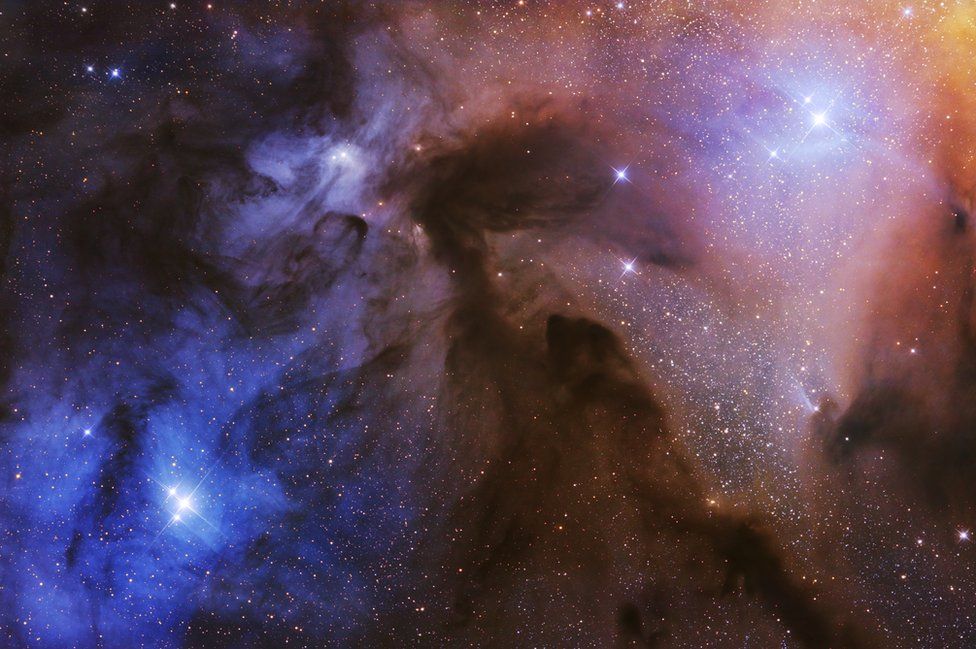Found images: 2017 September
- geckzilla
- Ocular Digitator
- Posts: 9180
- Joined: Wed Sep 12, 2007 12:42 pm
- Location: Modesto, CA
- Contact:
Found images: 2017 September
Have you seen a great image or video somewhere that you think would make a great APOD? Nominate it for APOD! Please post as much information here as you have about the image/video with a link to any source(s) for it you know of here, and the editors will take a look.
When posting the image itself, please do not post anything larger than a thumbnail here; please honor the copyright holder's copyright.
Please keep hotlinked images under 400K.
Thank you!
<< Previously
Just call me "geck" because "zilla" is like a last name.
-
starsurfer
- Stellar Cartographer
- Posts: 5409
- Joined: Thu Mar 15, 2012 7:25 pm
-
starsurfer
- Stellar Cartographer
- Posts: 5409
- Joined: Thu Mar 15, 2012 7:25 pm
Re: Found images: 2017 September
Last edited by starsurfer on Tue Sep 05, 2017 8:45 am, edited 1 time in total.
-
starsurfer
- Stellar Cartographer
- Posts: 5409
- Joined: Thu Mar 15, 2012 7:25 pm
Re: Found images: 2017 September
NGC 4394
https://www.spacetelescope.org/images/potw1618a/
Copyright: ESA/Hubble & NASA
Acknowledgement: Judy Schmidt
https://www.spacetelescope.org/images/potw1618a/
Copyright: ESA/Hubble & NASA
Acknowledgement: Judy Schmidt
-
starsurfer
- Stellar Cartographer
- Posts: 5409
- Joined: Thu Mar 15, 2012 7:25 pm
Re: Found images: 2017 September
NGC 4414
http://www.caelumobservatory.com/gallery/n4414.shtml
Copyright: Adam Block/Mount Lemmon SkyCenter/University of Arizona
http://www.caelumobservatory.com/gallery/n4414.shtml
Copyright: Adam Block/Mount Lemmon SkyCenter/University of Arizona
-
starsurfer
- Stellar Cartographer
- Posts: 5409
- Joined: Thu Mar 15, 2012 7:25 pm
-
starsurfer
- Stellar Cartographer
- Posts: 5409
- Joined: Thu Mar 15, 2012 7:25 pm
-
starsurfer
- Stellar Cartographer
- Posts: 5409
- Joined: Thu Mar 15, 2012 7:25 pm
-
starsurfer
- Stellar Cartographer
- Posts: 5409
- Joined: Thu Mar 15, 2012 7:25 pm
-
starsurfer
- Stellar Cartographer
- Posts: 5409
- Joined: Thu Mar 15, 2012 7:25 pm
-
starsurfer
- Stellar Cartographer
- Posts: 5409
- Joined: Thu Mar 15, 2012 7:25 pm
-
starsurfer
- Stellar Cartographer
- Posts: 5409
- Joined: Thu Mar 15, 2012 7:25 pm
Re: Found images: 2017 September
North America Nebula (NGC 7000) and Pelican Nebula (IC 5070)
http://www.astrosurf.com/ilizaso/orriak ... Q_U16m.htm
Copyright: Iñaki Lizaso
http://www.astrosurf.com/ilizaso/orriak ... Q_U16m.htm
Copyright: Iñaki Lizaso
-
Deep-Sky-Astroteam
- Ensign
- Posts: 54
- Joined: Tue Aug 26, 2014 9:01 am
- Location: Berlin - Germany
- Contact:
Re: Found images: 2017 September
NGC 6960 The Witch´s Broom Nebula
Copyrights: Nico Geisler & Frank Iwaszkiewicz https://www.deep-sky-astroteam.de/en/Ne ... oom-nebula
Copyrights: Nico Geisler & Frank Iwaszkiewicz https://www.deep-sky-astroteam.de/en/Ne ... oom-nebula
ESO: Is Proxima c hiding in this graph?
Do-it-yourself Science — Is Proxima c hiding in this graph?
ESO Picture of the Week | Red Dots | 2017 Sep 11
ESO Picture of the Week | Red Dots | 2017 Sep 11
[img3="Credits: ESO/G. Anglada-Escudé"]https://cdn.eso.org/images/screen/potw1737a.jpg[/img3][hr][/hr]This unusual Picture of the Week showcases the latest data gathered by ESO’s exoplanet hunter, the High Accuracy Radial velocity Planet Searcher (HARPS), during the ongoing Red Dots campaign, a search for terrestrial planets around our nearest three red dwarf stars: Proxima Centauri, Barnard’s Star, and Ross 154. The campaign was launched earlier in 2017 to build on the 2016 discovery of Proxima b around our nearest stellar neighbour, Proxima Centauri. Red Dots is designed as an open notebook science experiment, meaning the public has access to the data and can even contribute observations. Can you see a new exoplanet in these data of Proxima Centauri?
By carefully tracing the movement of a star over time, graphs like these can reveal the presence of exoplanets. Just as a star pulls on its orbiting planets using gravity, planets pull on the star, causing the star to wobble and shift the wavelength of its light by a small but measureable amount. By analysing the predictable, repeating changes, astronomers can infer the presence of a planet. The top left graph displays the 2016 data that confirmed the existence of Proxima b, showing how the planet is causing its parent star, Proxima Centauri, to move towards and away from Earth over time. The curved line represents the wobbling signal of the star, with the regular pattern of changing radial velocities (RV) repeating every 11.2 days.
The top right graph shows new measurements made with HARPS during the Red Dots campaign. The new data once again confirms Proxima b’s signal (in yellow), but also includes additional data patterns — visible here as a downward slope in both the 2016 and 2017 data points — hinting that there may be more to be discovered. To make a firmer statement on what is causing these patterns, astronomers need to use quantitative mathematical tools.
One such mathematical tool is called a periodogram, which searches for repeating signals in the data — displayed here as prominent peaks — that indicate the presence of a planet. The graph on the bottom panel shows the periodogram for the new data. The first signal (in white) corresponds to Proxima b. The second set of possible periods (in red), of around 200 days, are produced from patterns seen in the top panels. The presence of multiple peaks of similar heights means a signal cannot be precisely pinpointed and that its origin remains unclear. ...
Know the quiet place within your heart and touch the rainbow of possibility; be
alive to the gentle breeze of communication, and please stop being such a jerk. — Garrison Keillor
alive to the gentle breeze of communication, and please stop being such a jerk. — Garrison Keillor
HEIC: Starbursts in NGC 5398
Starbursts in NGC 5398
ESA Hubble Picture of the Week | 2017 Sep 11
ESA Hubble Picture of the Week | 2017 Sep 11
[img3="Credit: ESA/Hubble & NASA"]https://cdn.spacetelescope.org/archives ... w1737a.jpg[/img3][hr][/hr]This NASA/ESA Hubble Space Telescope picture shows NGC 5398, a barred spiral galaxy located about 55 million light-years away.
The galaxy is famous for containing an especially extensive HII region, a large cloud composed of ionised hydrogen (or HII, pronounced “H-two”, with H being the chemical symbol for hydrogen and the “II” indicating that the atoms have lost an electron to become ionised). NGC 5398’s cloud is named Tol 89 and sits at the lower left end of the galaxy’s central “bar” of stars, a structure that cuts through the galactic core and funnels material inwards to maintain the star formation occurring there.
Tol 86 is conspicuous in being the only large massive star forming complex in the entire galaxy, with an extension of roughly 5000 times 4000 light-years; it contains at least seven young and massive star clusters. The two brightest clumps within Tol 89, which astronomers have named simply “A” and “B”, appear to have undergone two bursts of star-forming activity — “starbursts” — roughly 4 million and less than 3 million years ago respectively. Tol 89-A is thought to contain a number of particularly bright and massive stars known as Wolf-Rayet stars, which are known for their high temperatures and extreme stellar winds.
Know the quiet place within your heart and touch the rainbow of possibility; be
alive to the gentle breeze of communication, and please stop being such a jerk. — Garrison Keillor
alive to the gentle breeze of communication, and please stop being such a jerk. — Garrison Keillor
-
starsurfer
- Stellar Cartographer
- Posts: 5409
- Joined: Thu Mar 15, 2012 7:25 pm
-
starsurfer
- Stellar Cartographer
- Posts: 5409
- Joined: Thu Mar 15, 2012 7:25 pm
Re: Found images: 2017 September
Ghost of Jupiter Nebula (NGC 3242)
http://www.pbase.com/tango33/image/156480776
Copyright: Kfir Simon
http://www.pbase.com/tango33/image/156480776
Copyright: Kfir Simon
-
starsurfer
- Stellar Cartographer
- Posts: 5409
- Joined: Thu Mar 15, 2012 7:25 pm
-
starsurfer
- Stellar Cartographer
- Posts: 5409
- Joined: Thu Mar 15, 2012 7:25 pm
-
starsurfer
- Stellar Cartographer
- Posts: 5409
- Joined: Thu Mar 15, 2012 7:25 pm
Re: Found images: 2017 September
Pre 30
http://www.chart32.de/index.php/component/k2/item/241
Copyright: CHART32
Processing: Johannes Schedler
http://www.chart32.de/index.php/component/k2/item/241
Copyright: CHART32
Processing: Johannes Schedler
-
starsurfer
- Stellar Cartographer
- Posts: 5409
- Joined: Thu Mar 15, 2012 7:25 pm
Re: Found images: 2017 September
M78
http://www.atacama-photographic-observa ... .php?id=57
Copyright: Thierry Demange, Richard Galli and Thomas Petit
http://www.atacama-photographic-observa ... .php?id=57
Copyright: Thierry Demange, Richard Galli and Thomas Petit
Re: Found images: 2017 September
starsurfer wrote:NGC 4394
https://www.spacetelescope.org/images/potw1618a/
Copyright: ESA/Hubble & NASA
Acknowledgement: Judy Schmidt
potw1618a.jpg
Thanks for posting this detailed Hubble image of NGC 4394 right after Bernhard Hubl's fine wide-angle image of NGC 4394 and M85, starsurfer!
Pink regions of star formation can be seen in Bernhard Hubl's image. Comparison with the detailed but Ha-less Hubble image makes it possible to identify the individual Ha nebulas.
Ann
Color Commentator
Re: HEIC: Starbursts in NGC 5398
How interesting!bystander wrote:Starbursts in NGC 5398
ESA Hubble Picture of the Week | 2017 Sep 11[img3="Credit: ESA/Hubble & NASA"]https://cdn.spacetelescope.org/archives ... w1737a.jpg[/img3][hr][/hr]This NASA/ESA Hubble Space Telescope picture shows NGC 5398, a barred spiral galaxy located about 55 million light-years away.
The galaxy is famous for containing an especially extensive HII region, a large cloud composed of ionised hydrogen (or HII, pronounced “H-two”, with H being the chemical symbol for hydrogen and the “II” indicating that the atoms have lost an electron to become ionised). NGC 5398’s cloud is named Tol 89 and sits at the lower left end of the galaxy’s central “bar” of stars, a structure that cuts through the galactic core and funnels material inwards to maintain the star formation occurring there.
Tol 86 is conspicuous in being the only large massive star forming complex in the entire galaxy, with an extension of roughly 5000 times 4000 light-years; it contains at least seven young and massive star clusters. The two brightest clumps within Tol 89, which astronomers have named simply “A” and “B”, appear to have undergone two bursts of star-forming activity — “starbursts” — roughly 4 million and less than 3 million years ago respectively. Tol 89-A is thought to contain a number of particularly bright and massive stars known as Wolf-Rayet stars, which are known for their high temperatures and extreme stellar winds.
Note the elongated dark tube of dust leading to the massive region of star formation. Indeed, this tube appears to interact with another dust funnel at right angles to it. Perhaps these two dusty channels cooperate in leading gas to Tol 86.
Anyway, the two criss-crossing dust funnels and the fantastically blooming Ha region at the end of it makes Tol 86 look like a rose on a stem with leaves.
Ann
Color Commentator
Re: Found images: 2017 September
The Rho Ophiuchi Clouds
Astrophotographer of the Year Award
Photo: Artem Mironov
Astrophotographer of the Year Award
Photo: Artem Mironov
Sky & Telescope wrote:
The Royal Observatory Greenwich announced the winners of the 9th annual Insight Astronomy Photographer of the Year contest. Russian photographer Artem Mironov took the grand prize of £10,000 for his deep, colorful image entitled "The Rho Ophiuchi Clouds."
Judges were impressed by Mironov's innovative composition and processing of this picturesque stellar nursery that straddles the border of the constellations Ophiuchus and Scorpius. Competition judge and Royal Observatory Public Astronomer, Dr Marek Kukula states, “There's an astonishing richness of color and structure in this gorgeous image. It’s a popular part of the sky for astrophotographers, but this image shows it to us in a fresh light with a sense of mystery in the churning clouds of gas and dust, reminding us that there’s still so much to discover out there. A dazzling corner of our galaxy captured perfectly.”
Color Commentator
Re: Found images: 2017 September
Asteroid 3122 Florence
https://www.youtube.com/watch?v=BQhbH2VY_V8
Copyright: Uğur Ikizler 03.09.2017; 01:09 – 04:22 GMT+3
Mudanya - Bursa; 40.36023° N - 28.90191° E
https://www.facebook.com/photo.php?fbid ... ater&ifg=1
https://www.youtube.com/watch?v=BQhbH2VY_V8
Copyright: Uğur Ikizler 03.09.2017; 01:09 – 04:22 GMT+3
Mudanya - Bursa; 40.36023° N - 28.90191° E
https://www.facebook.com/photo.php?fbid ... ater&ifg=1


